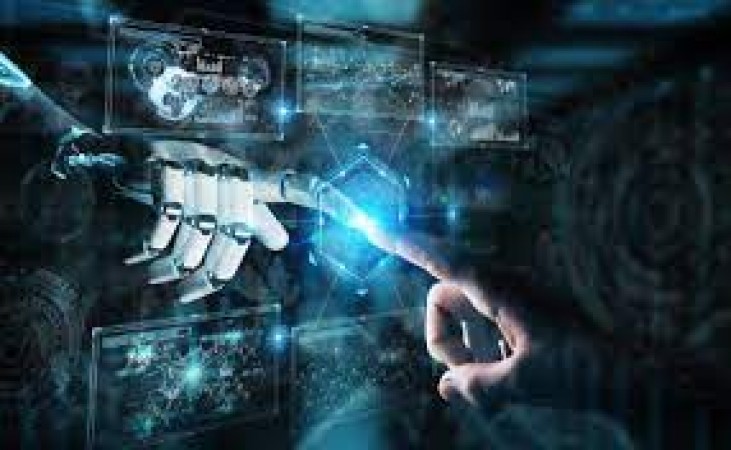
In today's rapidly evolving world, technology has become an integral part of various industries. One such significant advancement is the collaboration between humans and machines in industrial settings. This symbiotic relationship between human workers and intelligent machines has the potential to revolutionize the way industries operate, leading to improved efficiency, safety, and decision-making processes.
Understanding Human-Machine Collaboration
Human-machine collaboration refers to the integration of advanced technologies, such as artificial intelligence (AI), robotics, and machine learning, into the existing industrial infrastructure. Rather than replacing human workers, these technologies complement and augment their capabilities, enabling them to perform tasks more effectively and efficiently. The essence of successful human-machine collaboration lies in striking the right balance between what humans do best, such as creativity, critical thinking, and emotional intelligence, and what machines excel at, including data analysis, repetitive tasks, and precision.
Benefits of Human-Machine Collaboration in Industrial Settings
Improved Efficiency and Productivity
Incorporating intelligent machines into industrial processes can significantly enhance overall efficiency and productivity. Robots and AI-powered systems can handle repetitive and time-consuming tasks, reducing the burden on human workers. This allows employees to focus on more complex and strategic aspects of their jobs, leading to higher productivity levels.
Enhanced Safety Measures
Safety is paramount in industrial settings, where workers are often exposed to hazardous environments. Human-machine collaboration can mitigate risks by assigning dangerous tasks to robots or drones. Additionally, intelligent systems can continuously monitor working conditions, helping prevent accidents and ensuring a safer work environment.
Data-Driven Decision Making
The collaboration between humans and machines generates vast amounts of data, offering valuable insights into industrial operations. Advanced analytics and machine learning algorithms can process and interpret this data, enabling data-driven decision-making at every level of the organization. This leads to better-informed choices, improved processes, and higher quality products.
Overcoming Challenges in Implementing Human-Machine Collaboration
While the benefits of human-machine collaboration are undeniable, its successful implementation does not come without challenges. Addressing these challenges is crucial to ensure the smooth integration of intelligent systems in industrial settings.
Workforce Training and Skill Development
Introducing new technologies requires upskilling and reskilling the existing workforce. Employers must invest in training programs to help employees adapt to the changes and acquire the necessary skills to operate alongside machines effectively.
Addressing Security Concerns
With the increased reliance on technology, industrial systems become susceptible to cyber threats. Maintaining robust cybersecurity measures is vital to safeguard sensitive data and protect the integrity of industrial processes.
Integrating New Technologies with Existing Systems
Many industrial settings already have established infrastructure and systems in place. Integrating new technologies seamlessly with existing setups can be a complex task. Compatibility issues, interoperability, and data sharing between different systems need careful consideration.
Successful Case Studies of Human-Machine Collaboration in Industries
Automotive Manufacturing
The automotive industry has embraced human-machine collaboration to streamline manufacturing processes. Robots work alongside human workers, handling repetitive assembly tasks, leading to increased production rates and improved precision.
Logistics and Supply Chain Management
In warehouses and distribution centers, autonomous robots efficiently manage inventory, perform picking and packing tasks, and optimize logistics operations. This collaboration results in faster order fulfillment and reduced operational costs.
Healthcare Sector
In the healthcare industry, robots assist surgeons in performing complex surgeries with unparalleled precision. AI-powered systems analyze medical data to aid in diagnosis and treatment planning, ultimately enhancing patient care.
The Future of Human-Machine Collaboration
AI Advancements and Robotics
As AI and robotics continue to evolve, the potential for human-machine collaboration will only expand. More industries will adopt intelligent systems to enhance their operations, leading to further advancements and innovations.
Ethics and Human-Centric Approach
Amid the rapid integration of technology, it is essential to maintain a human-centric approach. Ethical considerations, such as job displacement and privacy concerns, must be carefully addressed to ensure the well-being of the workforce and society as a whole. Human-machine collaboration in industrial settings is a transformative concept that brings together the best of human ingenuity and technological prowess. By leveraging the strengths of both humans and machines, industries can unlock unprecedented levels of productivity, safety, and innovation. However, to fully realize the potential of this collaboration, it is imperative to overcome challenges, invest in workforce development, and embrace a human-centric approach to technology.
YouTube TV Unveils Exciting Multiview Feature Allowing Simultaneous Streaming of Four Channels
Reshaping Traditional Industries: The Power of Innovation Unleashed
Globalization and the Industrial Landscape: How Interconnectedness Shapes the Future of Industries